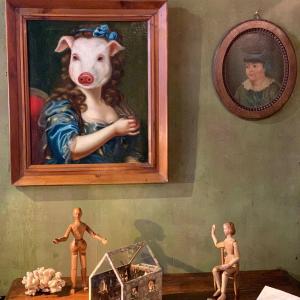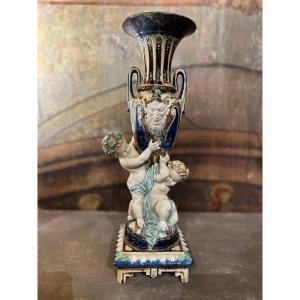Saint Catherine holds the palm of martyrs in her hand, her gaze is directed towards the censer (the smoke of the incense rising towards the sky symbolizes the prayer which ascends towards God). Saint Catherine is best known by the Golden Legend of Jacques de Voragine. The tradition places his birth in a noble family of Alexandria and dates his death in the same city, at 18 years old in 312, under the reign of Maximin II Daïa.
She would have been highly educated considering her gender and age. By her acquired knowledge she is placed at the level of the greatest poets and philosophers of the moment. At 18, she would have converted several philosophers who had been commissioned by the emperor to make her renounce her faith.
A prefect then advises a fierce torture for the virgin, so that the example of this death frightens the other Christians: four wheels surrounded by saws of iron and nails must tear and crush her body. So the virgin begged the Lord to destroy this machine. “And lo and behold, an angel of the Lord struck and shattered this millstone with such force that he slew four thousand pagans.
The queen and a large number of soldiers, having confessed their conversion, are executed by beheading (which can be seen in the background to the right of the canvas). The emperor offers Catherine to become his wife. She refuses and the emperor condemns her to be beheaded.
Many corporations have placed themselves under his patronage: those which used mechanics comprising wheels and those of the intellect.
Colleges at Oxford and Cambridge universities bear his name and the wheel symbol on their crests.
The college of Sorbon, of which the Sorbonne is the heiress, had among others Saint Catherine of Alexandria as patron. His crest bore a wheel.
The Saint is also the saint patron of catherinettes (young women over 25 and still single).
XVII century,
Italy















































 Le Magazine de PROANTIC
Le Magazine de PROANTIC TRÉSORS Magazine
TRÉSORS Magazine Rivista Artiquariato
Rivista Artiquariato